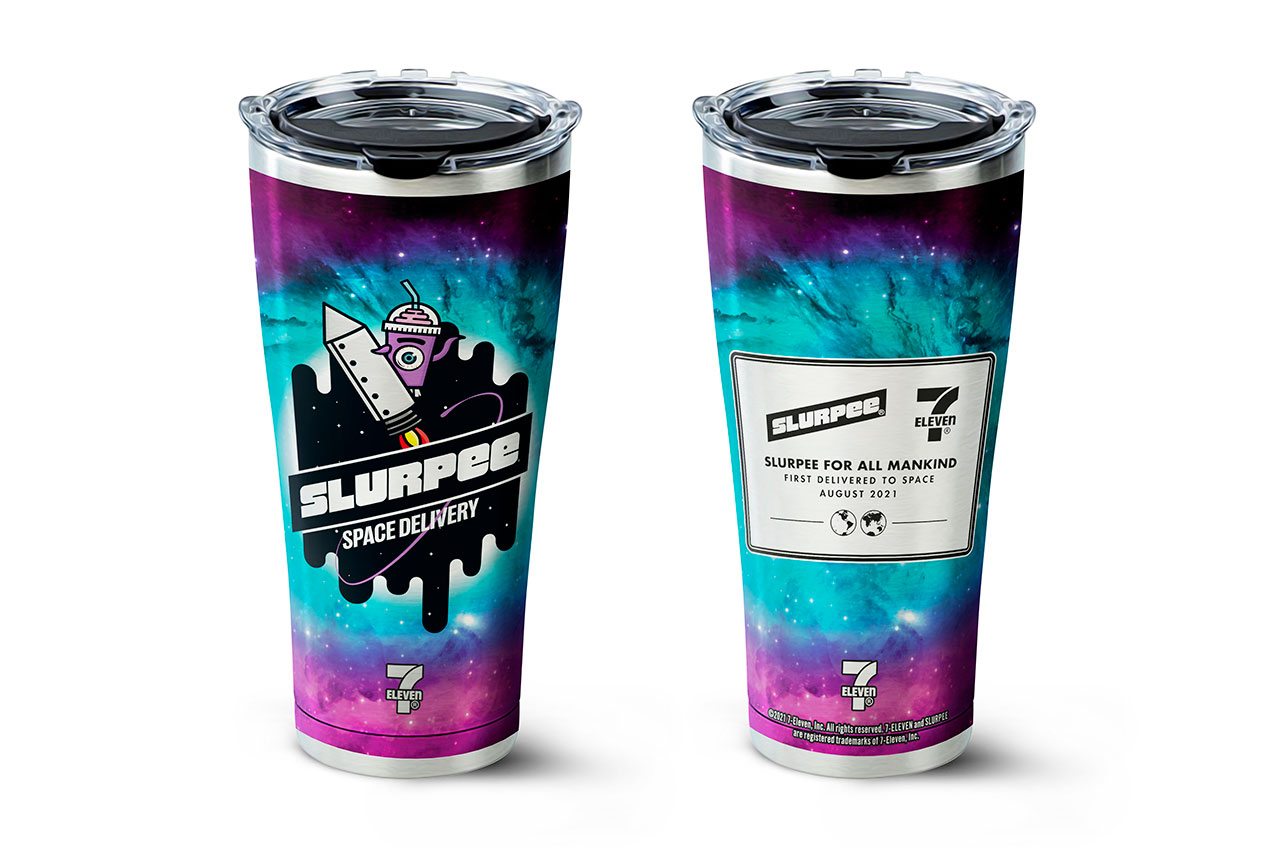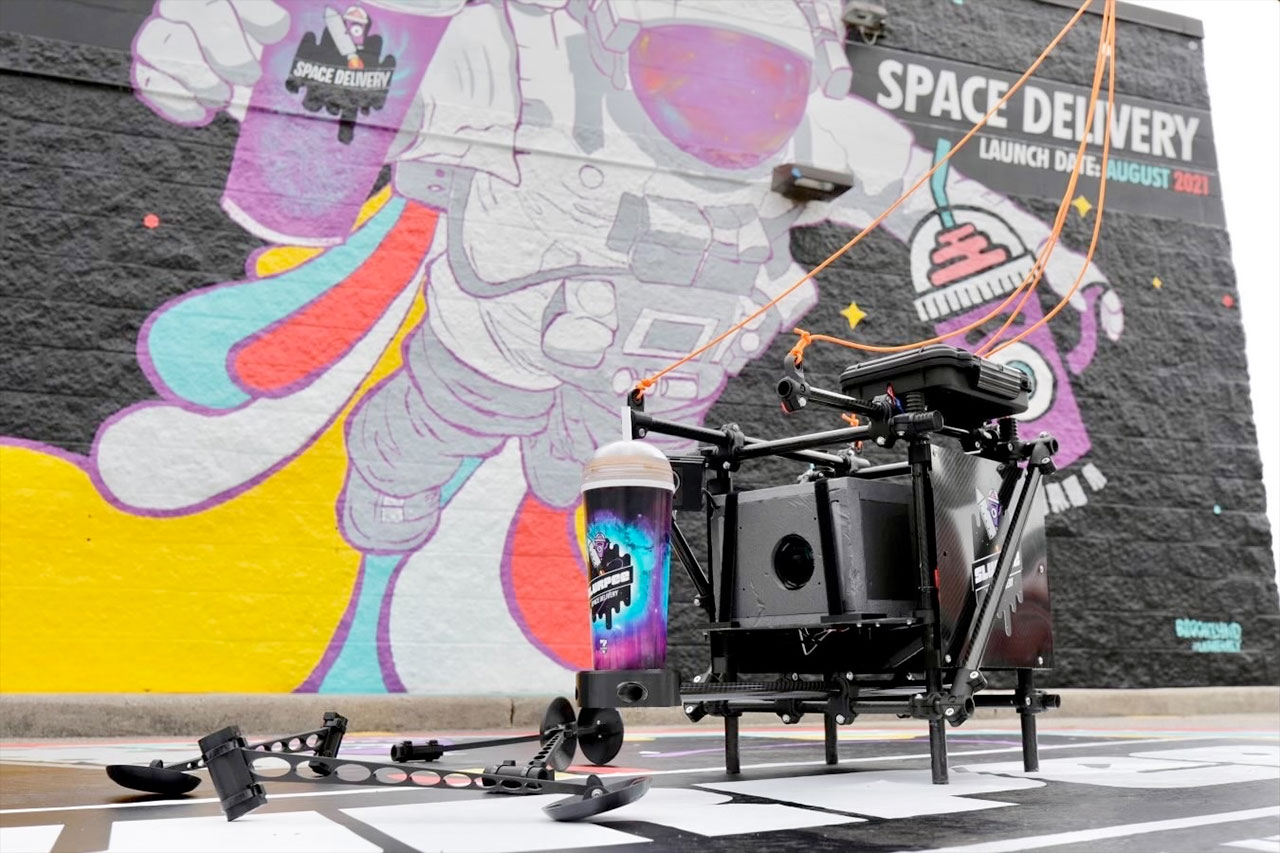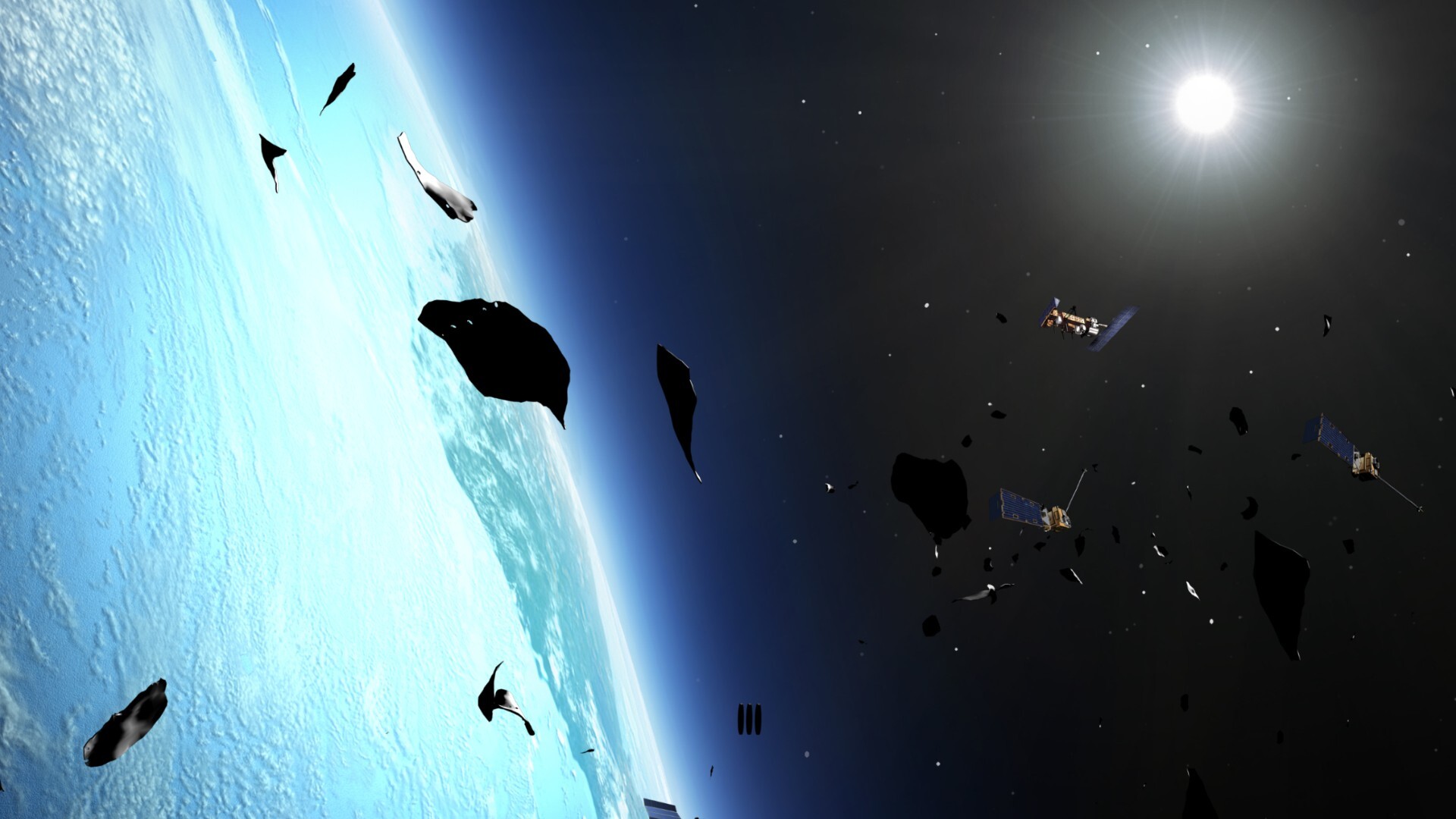7-Eleven launches Coca-Cola Slurpee on stratospheric 'space' flight

As the debate continues as to where Earth ends and outer space begins, one thing is now for certain: a 7-Eleven Slurpee has come closer to leaving the planet than any convenience store-dispensed drink has done before.
The high-flying frozen concoction took the skies on Tuesday (Aug. 10) for what 7-Eleven described as a "space delivery" for its 94th birthday. Poured into a special commemorative cup created just for the occasion, the Slurpee — and its camera-equipped platform — was "launched" under a helium-filled weather balloon from a 7-Eleven store in Michigan, the "Slurpee capital of the United States." (Michigan is the state where the most Slurpee drinks are consumed).
"My Slurpee said it needed some space, so here we are," 7-Eleven wrote on Instagram, sharing a video of the blue and purple Slurped-filled cup set against the blackness of space and the blue and white of Earth below.
"It was the perfect amount of space, in my opinion," the social media account for the Slurpee brand replied.
Related: As Seen on TV: These Commercials Were Filmed in Space!
A post shared by 7-ELEVEn (@7eleven)
A photo posted by on
7-Eleven, the largest and oldest chain of convenience stores, let Slurpee fans decide the favor for the flight by tallying all of the Slurpee orders it received for delivery through the 7-Eleven in July. Beating out the runner-ups, Cherry and Blue Raspberry, Coca-Cola became the first Slurpee flavor to enter the stratosphere.
"In 1985, Coca-Cola became the first soft drink to be consumed in space, so it's only fitting that fans decided the classic flavor is best suited to go where no other frozen beverage has been before!" a 7-Eleven representative said in a statement.
Breaking space news, the latest updates on rocket launches, skywatching events and more!
Coca-Cola, together with Pepsi, first launched into orbit on NASA's 19th space shuttle mission, STS-51F, on board the orbiter Challenger. Packaged in special "space cans," the drinks were warm and not very satisfying according to the astronauts, other than for forming carbonated Coke balls to float around the cabin.
Related: 'Space cola wars': When Coca-Cola, Pepsi tested soda in space
Coca-Cola later flew on two more shuttle missions, testing more sophisticated pressurized cups and a multi-flavor dispenser, but it was ultimately retired from spaceflight in 1996.
Tuesday's 7-Eleven flight had the potential to climb a few times higher than the cruising altitude of a commercial airliner, but fell short of reaching even the lowest definition of outer space by more than 100,000 feet (30,480 m). By U.S. definition, space begins at 50 miles high (262,000 ft or 80 km), whereas the world's record-keeping body sets the boundary at 62 miles (328,000 ft or 100 km).

Flying with the Coca-Cola Slurpee were a limited number of additional (empty) cups to be randomly awarded to customers who used 7-Eleven Delivery through the 7-Eleven app in July. The 10 stainless steel tumblers and 30 plastic cups each feature the "Slurpee Space Delivery" logo on their front and a take on the Apollo lunar lander plaques on their back, declaring it as a "Slurpee For All Mankind."
7-Eleven first announced its Slurpee "spaceflight" on July 12, the day after the space tourism company Virgin Galactic launched its founder, Richard Branson, on its first fully-crewed suborbital test flight. Branson flew on July 11, or 7-11.
"Richard Branson, now we're even and we can all move on," 7-Eleven tweeted on Tuesday.
Follow collectSPACE.com on Facebook and on Twitter at @collectSPACE. Copyright 2021 collectSPACE.com. All rights reserved.

Robert Pearlman is a space historian, journalist and the founder and editor of collectSPACE.com, a daily news publication and community devoted to space history with a particular focus on how and where space exploration intersects with pop culture. Pearlman is also a contributing writer for Space.com and co-author of "Space Stations: The Art, Science, and Reality of Working in Space” published by Smithsonian Books in 2018.
In 2009, he was inducted into the U.S. Space Camp Hall of Fame in Huntsville, Alabama. In 2021, he was honored by the American Astronautical Society with the Ordway Award for Sustained Excellence in Spaceflight History. In 2023, the National Space Club Florida Committee recognized Pearlman with the Kolcum News and Communications Award for excellence in telling the space story along the Space Coast and throughout the world.


